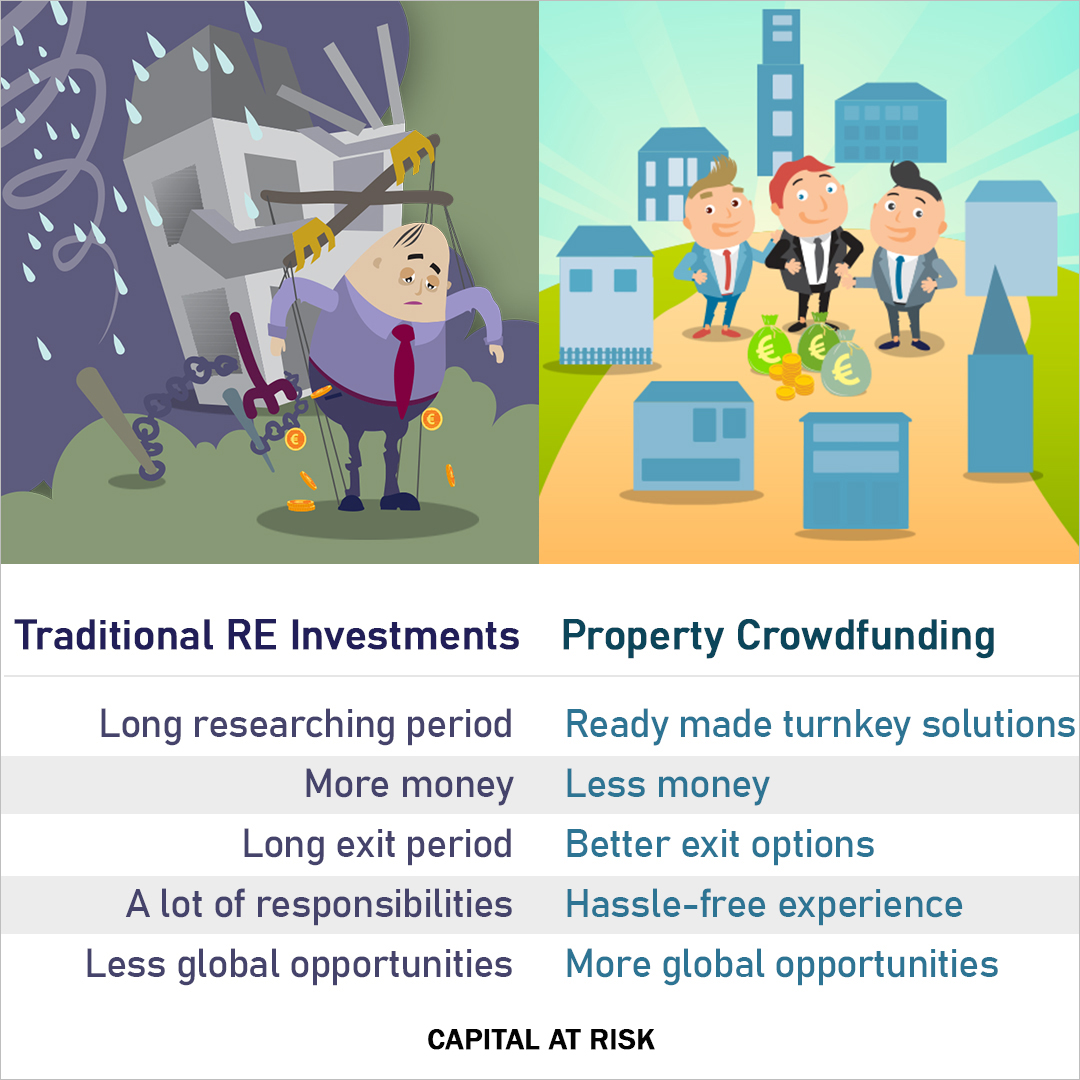
Crowdfunding and traditional real estate investments are very different in their nature. While real estate crowdfunding pools several investors together to invest in one project, traditional real estate models usually leave a single investor to find the capital and bear the risks in full for this task. Let's try to compare these two fundamentally different ways to invest.
Traditional RE Investments
- Long researching period. You need to research a location and analyze the prices and details of the real estate market in your chosen area before you invest your money. You also need to source and deal on your own with real estate agents, lawyers, surveyors etc. which involves a lot of paperwork on your way to finally purchasing a suitable property.
- More money – more risk. By putting all your funds into one project, you logically increase the associated risks for this. In such a scenario, you can not guarantee that one particular property will by itself be protected from real estate market changes in a particular area, or natural disasters, changes in the economic situation in the country and so on.
- Long exit period. In order to sell the property and not to lose the initial amount of your investment, an investor will have to put in a lot of effort and negotiate with local agents. Naturally, the whole procedure for a property sale takes time.
- A lot of responsibilities. Traditionally, a real estate investor's responsibilities include all the associated paperwork, researching the market, viewing and selecting suitable properties and managing them while rented out, including finding and keeping tenants, resolving any maintenance problems and so on.
- Less global opportunities. It is more difficult to invest abroad through traditional real estate investment models. An investor needs to learn on their own the government regulations for property transactions and rental for each particular country they invest in. Each government has its own rules about the purchase process for foreign investors and it could take months to study these and ensure compliance.

Property Crowdfunding
- Ready-made turnkey solutions. Property crowdfunding allows you to invest in a project where a third party and a local real estate agency have already compared the prices, analyzed the real estate market, discovered what’s on offer from the real estate agent and generally gone through most of the steps that traditional real estate investors need to take on their own.
- Less money - Less risk. Property crowdfunding allows investors to spread their capital over a number of properties which reduces the risks and allows investors to more effectively protect themselves from accidents and other disasters. Even if one of these projects will not bring in the expected revenue, investors will not lose so much financially from a single failure and balance this with success from their other property investments.
- Better exit options. With property crowdfunding, investors can exit an investment at any time by selling the shares to a third party in a much shorter time and with much less effort. Thus, investors receive greater liquidity for their capital.
- Hassle-free experience. In a property crowdfunding model, investors do not need to directly manage the properties and solve all the maintenance and tenant problems. As a result, investors only need to invest funds and wait for the revenue returns.
- More global opportunities. With property crowdfunding, you are able to invest anywhere in the world, select any country and determine the size of the properties, the real estate market you are most interested in and the nature and scale of investment you want to make.
As you can see, property crowdfunding really does have more advantages over traditional investment models, which mainly include easier access to properties anywhere and no direct management of these. Thus, we consider property crowdfunding an investment solution for 2019.


